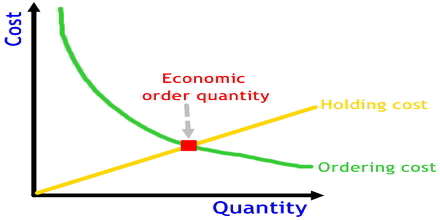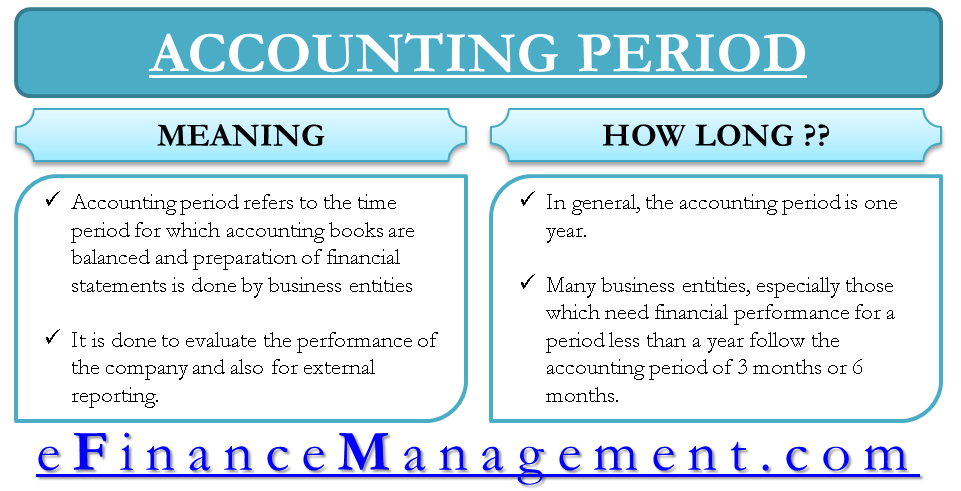
However, companies that ship goods in the United States must also follow the Uniform Commercial Code (UCC). Due to there being more than one set of rules, the parties in a contract must specify which governing laws they used for a shipment. EXW terms often result in cheaper goods; however, the supplier’s risk is increased as they maintain responsibility for the product for longer. ‘FOB Destination, Freight Prepaid’ is the opposite of ‘FOB Destination, Freight Collect’ and is used to indicate that the seller assumes the cost of freight. If anything happens to the goods on any leg of the journey to the buyer, the supplier assumes all responsibility. With the advent of e-commerce, most commercial electronic transactions occur under the terms of “FOB shipping point” or “FCA shipping point”.
Where the FOB terms of sale are indicated as “FOB Origin,” the buyer is responsible for the costs involved in transporting the goods from the seller’s warehouse to the final destination. Freight collect simply means that the receiver of the freight is liable for all freight charges. Freight collect also assumes that the receiver is responsible for handling damage and loss claims. In contrast, freight prepaid is when the shipper or seller pays all shipping costs, including damage and loss expenses. If the FOB terms of sale indicate that it is “FOB delivered,” then this implies that the shipper will be responsible for all of the carrier’s costs.

It requires the supplier to pay for the delivery of your goods up until the named port of shipment, but not for getting the goods aboard the ship. With FOB destination, ownership of goods is transferred to the buyer at the buyer’s loading dock. As such, FOB shipping means that the supplier retains ownership and responsibility for the goods until they are loaded ‘on board’ a shipping vessel. It is much easier to determine when title transfers by referring to the agreed upon terms and conditions of the transaction; typically, title passes with risk of loss.
Also assume that the goods are in transit until they arrive at the buyer’s location on January 2. On December 30, the seller should record a sale, an account receivable, and a reduction in its inventory. Freight collect means the person receiving the shipment is responsible for all freight charges. They also assume all risks and are responsible for filing claims in the case of loss or damage. The term “freight on board” originated from the days of sailing ships when goods were “passed over the rail by hand,” as defined in Incoterm. The term “FOB” was used to refer to goods transported by ship since sea transport was the main method of transporting cargo from far countries.
Freightos
FOB stands for “free on board” or “freight on board” and is a designation that is used to indicate when liability and ownership of goods is transferred from a seller to a buyer. It is important to note that FOB does not define the ownership of the cargo, only who has the shipping cost responsibility. In FOB agreements, the responsibility for shipping transfer to the buyer as soon as the goods leave the seller’s location under FOB Shipping Point. Or, the responsibility can transfer to the buyer once he or she receives the goods if there is a FOB Destination agreement in place. With Ex Works, the seller is not obligated to load the goods on the buyer’s designated method of transport. Instead, the seller must make the product available at a selected location, and the buyer must incur transportation costs.
- Understanding the differences between each is as simple as knowing how much responsibility the buyer and supplier assume under each agreement.
- CIF stands for Cost, Insurance and Freight, whereas FOB stands for Free on Board.
- If the carrier damages the package, the buyer can’t come after the seller because the title has already transferred.
- Under FOB Shipping Point, the seller would record the sale as soon as the goods leave the seller’s premises.
If you’ve ever shipped anything, you’ve likely seen the acronym FOB in your shipping documents. Even those in the shipping industry with knowledge of freight shipping terminology often are confused as to the true meaning. With an automated system, the work can be done more quickly and accurately. It helps lower costs by reducing delays in delivery times, which means customers will receive their shipments faster than they would otherwise.
Popular Buy Now, Pay Later Options: How to Use Sezzle
Freight on board is another term that is often used in place of free on board. Upgrading to a paid membership gives you access to our extensive collection of plug-and-play Templates designed to power your performance—as well as CFI’s full course catalog and accredited Certification Programs. Starting and maintaining solid, professional sales practices is essential for the growth of a business. Get low rates from top carriers, free rebill audits, national and regional coverage, and much more. To see our product designed specifically for your country, please visit the United States site.

The seller has no legal reason to accept those goods back and the return shipment could possibly result in additional damages. FOB destination helps buyers as they are not responsible for the transport of goods. Instead, the seller holds complete accountability and needs to pay shipping costs. Buyers can also inspect the consignment and check for damages before clearing the payments. When we consider the FOB shipping point, the ownership of the shipment gets transferred from the buyer to the seller at the loading point of the goods.
FOB is only used in non-containerized sea freight or inland waterway transport. As with all Incoterms, FOB does not define the point at which ownership of the goods is transferred. FOB origin, or shipping point, means that the buyer will receive the title for the goods they purchased when shipment begins. The seller’s responsibility ends when the fob shipping point means items are placed with a shipment carrier, and the buyer must ensure their goods reach their final destination on time and undamaged. FOB terms of sale establish which party (vendor or retailer) will be liable for the transportation costs, which party is in control of the movement of the goods, and when (date/time) the title passes to the buyer.
Insurance Claims Under FOB Shipping Point Terms
If the goods are damaged in transit, the loss is the responsibility of the buyer. Incoterms define the international shipping rules that delegate responsibility of buyers and sellers. In this case, the seller completes the sale in its records once the goods arrive at the receiving dock.
Similarly, the buyer needs to update their inventory and make a note of the incoming shipment. They need to update the records even if they are yet to receive the shipment. A bill of lading, or BOL for short, is a transport document that is required for shipping freight. A BOL can be defined as a receipt for services rendered during a freight shipment.
FOB Origin vs. FOB Destination
Though in line with the accounting treatment mentioned above, it is worth explicitly calling out that FOB shipping point and FOB destination transfer ownership at different times. In an FOB shipping point agreement, ownership is transferred from the seller to the buyer once goods have been delivered to the point of origin. Once at this shipping point, the buyer is the owner of the goods and at risk during transit. FOB shipping point and FOB destination indicate the point at which the title of goods transfers from the seller to the buyer. The distinction is important in specifying who is liable for goods lost or damaged during shipping.
When it is indicated as “FOB Origin,” it means that the transfer occurs at the seller’s shipping dock when the goods are safely on board the ship. FOB destination holds the seller responsible for the shipment’s transportation to the unloading dock of the buyer. Formatting will erase any lingering data fragments and ensure that the card is how to recover data from corrupted excel file clean and ready for future use. If there are issues during the transit, the seller may even have to compensate the buyer based on the agreed terms.
Form S-1 Northann Corp. – StreetInsider.com
Form S-1 Northann Corp..
Posted: Fri, 14 Jul 2023 18:33:45 GMT [source]
On the flipside, the buyer must note in its accounting system that it has inventory on its way. That inventory is now an asset on the buyer’s books, even though the shipment has not arrived yet. If the goods are damaged in transit, the buyer should file a claim with the insurance carrier, since the buyer has title to the goods during the period when the goods were damaged. The buyer records the purchase, accounts payable, and the increase in inventory on January 2 when the buyer becomes the owner of the goods. It’s important for the moment of sale to be accurately recorded for this reason, and also for entry into the company records. If you do not know how to measure your freight properly, you run the risk of paying additional fees after delivery.
Freight on Board
At the same time, the buyer will record in its accounting system that inventory is on route. That inventory then becomes an asset in the buyer’s accounting books even though the shipment hasn’t yet arrived. Under the terms of FOB, responsibilities for covering freight costs, losses or damages are divided between both the seller and the buyer and are defined in the sale contract or purchase order of a freight shipment. FOB destination, or FOB destination point, means that the seller is at risk to pay for the damage until the buyer receives the products. The seller selects the freight carrier and is responsible for shipping the goods to the final destination point.
Thus, it’s important to be clear about the terms and know who is responsible for the shipment at every stage of its journey. The buyer should record the purchase, the account payable, and the increase in its inventory as of December 30 (the date that the purchase took place). Since the goods on the truck belong to the buyer, the buyer should pay the shipping costs.

The term has been expanded since the days when sea commerce was the primary means of transporting goods, and the definition includes all types of transportation and can vary by country or legal jurisdiction. The buyer owns the product en route to its warehouse and must pay any delivery charges. Now assume that a seller quoted $975 FOB destination and the seller loaded the goods onto a common carrier on December 30.
Although FOB shipping point and FOB destination are among the most common terms, there are other agreements that vary from these two. Expert freight shipping tips and fast, easy tools to help you ship freight. An Intelligent Document Processing (IDP) platform like VisionERA can help you automate the processing of FOB shipping documents. You can extract relevant information in minutes from the input of all types.
- Since the package was shipped using shipping point, the title of the goods transferred when GM placed the package on the loading dock.
- It helps lower costs by reducing delays in delivery times, which means customers will receive their shipments faster than they would otherwise.
- These international contracts outline provisions including the time and place of delivery as well as the terms of payment agreed upon by the two parties.
- In the FOB shipping point, when the buyer gets the responsibility of the goods from the buyer, they can make an entry in their inventory list.
- FOB stands for “free on board” or “freight on board” and is a designation that is used to indicate when liability and ownership of goods is transferred from a seller to a buyer.
FOB shipping point and FOB destination charges also have an impact on people who ship their vehicles overseas. However, the seller also manages the safe delivery of the shipment to its destination. Understanding Unallocated SD Cards
An unallocated recover notepad file unsaved SD card refers to a storage device that has been partitioned but does not have any file system assigned to it. The buyer will pay for the shipping charges along with the rest of the shipment amount.